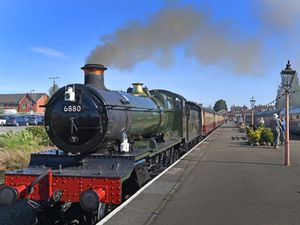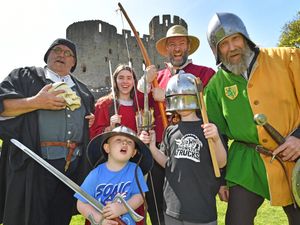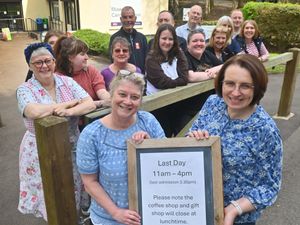Bid to remember Spitfires Wolverhampton sent to war in virtual exhibition
Plans are being drawn up for an 80th anniversary "virtual exhibition" to tell the story of two Spitfire fighters which were paid for through Wolverhampton fundraising appeals and were pitched into the aerial battle against Hitler's air force.
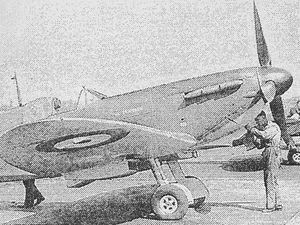
Named The Wulfrun and The Inspirer, both Spitfires were lost in action, and their pilots were killed.
To coincide with the 80th anniversary of the Express & Star Fighter Fund, which in June 1940 raised the cash to buy a fighter – claimed to have been the first UK fund to do so, an exhibition had been due to take place from May 26 to June 18 at Wolverhampton Central Library.
"Because of present circumstances the physical exhibition will not be possible but we are now looking at organising a 'virtual' exhibition online instead," said organiser Jim Barrow, who has been working with Wolverhampton aviation historian Stephen King on the project.
Jim said it might be possible to hold the physical exhibition later in the summer, depending on the lockdown situation.
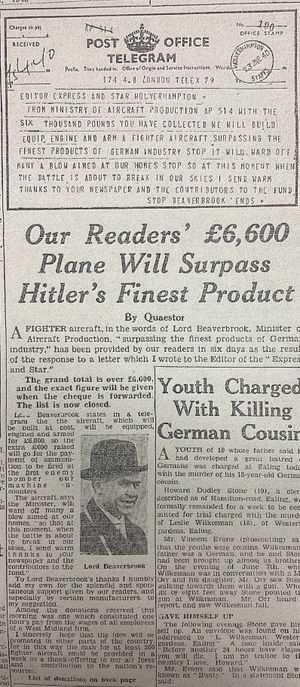
"I am just starting work on the 'virtual' exhibition – which I have never done before – but we hope to have input from the modellers and aircraft artists at RAF Cosford who have been working on replicas of the two aircraft funded from Wolverhampton.
"The second aircraft fund was specifically a Spitfire appeal by Wolverhampton's Mayor in the autumn of that year, 1940, and led to a Spitfire being called The Wulfrun."
The Spitfires were paid for by people from Wolverhampton, the Black Country, and Staffordshire.
Stephen has researched that epic effort, the result of two Wolverhampton appeals, the first being the brainchild of "Quaestor" – legendary Express & Star journalist Wilfred Byford-Jones in June 1940.
Money started pouring in to buy a fighter – it was not specifically for a Spitfire – and the final total was £6,746. Lord Beaverbrook, the Minister of Aircraft Production, sent a letter to the Editor saying it would be enough to build, equip, and arm a fighter.

Cost of the aircraft was put at £6,000 and the paper said the extra money would "go for the payment of ammunition to be fired at the first enemy bomber our machine encounters."
Soon afterwards the Mayor of Wolverhampton’s fund, specifically to buy a Spitfire, raised enough to buy a second fighter.
Allocated to the Express & Star fund was "The Inspirer" while the Mayor's fund Spitfire was "The Wulfrun."
Stephen says: "If there were official photographs and plaques that might have been presented to the Express & Star and the town or Mayor – Harry Austin White in 1939/40 or Albert Abraham Beach in 1940/41 – they seem to be long gone, stored away or even worse, thrown away or stolen.
"Luckily, by means unknown, the plaque, or at least a photograph of it, for the Express & Star appeal which produced The Inspirer survived at its new home, the RAF Museum Hendon."
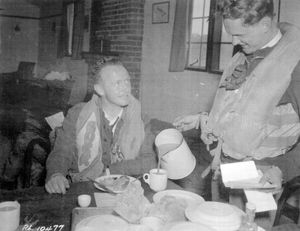
The Inspirer was a Spitfire Vb, serial number AB917, which after a year in storage joined 401 Squadron, a Royal Canadian Air Force squadron. It was shot down in April 1942.
Stephen says the pilot was Gerald Bickle Whitney Jnr., who was born in Canada but brought up and schooled in Fort Worth, Dallas, Texas. He was killed when the Spitfire crashed and exploded at Whitfield, Kent, after combat with German fighters.
The Wulfrun pilot, Flight Lieutenant William Thomas Johnstone, also of the RCAF, was killed in action over the English Channel on April 14, 1943, while flying the Spitfire Mk Vb, P8715, with 411 Squadron. He bailed out of the machine and was last seen in his dinghy a few miles off the coast.
Stephen added: "During World War Two it is thought there were at least around 1,500 'presentation' named aircraft which included our Inspirer and Wulfrun. They should not be forgotten."

